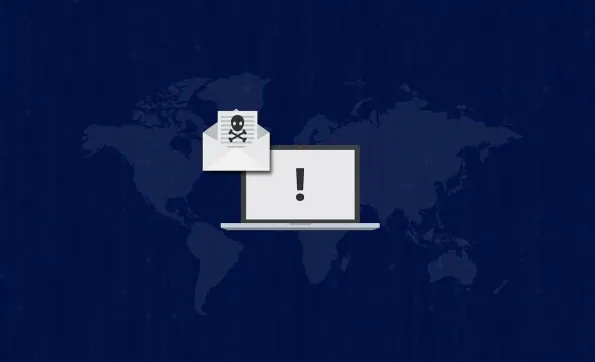As we approach 2025, the cybersecurity landscape continues to evolve, presenting new challenges and opportunities for organizations worldwide. One of the most critical aspects of modern cybersecurity is threat intelligence sharing. Effective collaboration and communication are essential for tackling the ever-evolving landscape of cyber threats and malicious activities. This article explores the current state and future direction of threat intelligence sharing within the cybersecurity community, emphasizing the need for breaking down silos and fostering synergy.
Breaking Down Organizational Silos
The cybersecurity community has made significant strides in collaboration at a macro level, with government agencies like the Office of the Director of National Intelligence (ODNI) and the National Security Agency (NSA) forming closer industry partnerships. However, these efforts must be complemented by micro-level collaboration within organizations. Internal silos between various cybersecurity teams, such as Security Information and Event Management (SIEM) teams, vulnerability management teams, incident response (IR) teams, and cyber threat intelligence (CTI) teams, hinder effective threat intelligence sharing.
Eliminating these barriers requires a cultural shift within organizations. Teams must prioritize open communication and collaboration, breaking down the walls that separate them. By fostering a culture of shared responsibility and mutual support, organizations can enhance their overall cybersecurity posture. This shift is not only about technology but also about changing mindsets and encouraging teamwork.
Moreover, overcoming these internal barriers enables a more cohesive approach to threat detection and response. Unified cybersecurity teams can respond faster and more effectively to incidents, minimizing potential damage and disruption. Collaboration at the micro-level also ensures that all teams are working with the same up-to-date threat intelligence, reducing the risk of missed or delayed responses to threats. As cyber threats become more complex and coordinated, so must the defenses against them.
The Role of Threat Intelligence Platforms
One of the major obstacles to effective intelligence sharing is the lack of automated bidirectional information flows. To address this, organizations should deploy threat intelligence platforms that facilitate smoother and more efficient data exchange across teams. These platforms can integrate with existing security tools and provide a centralized repository for threat intelligence data. By automating the sharing process, these platforms reduce the reliance on manual communication, which can be slow and error-prone.
A centralized source of truth for threat intelligence is crucial, especially with the shift towards remote working. Traditional methods of documenting and sharing information, such as whiteboards in physical office spaces, are no longer feasible. Remote teams often rely on disparate communication channels like Slack or individual messaging platforms, leading to knowledge fragmentation. A centralized system of record ensures that corporate knowledge is retained and built upon, rather than being lost as team members move on or communication archives are deleted.
Implementing a centralized platform also helps in standardizing threat intelligence data, making it easier to analyze and use. Consistent and structured data formats enable better understanding and quicker decision-making. Furthermore, threat intelligence platforms can aggregate data from various sources, providing a comprehensive view of the threat landscape. This holistic approach allows organizations to identify trends and patterns, anticipate potential threats, and take proactive measures to protect their systems.
Regulatory Compliance and Operational Resilience
Regulatory compliance is another critical aspect of threat intelligence sharing. European Union regulations like the Digital Operational Resilience Act (DORA) and the Network and Information Systems Directive (NIS2) mandate that organizations share information on threats and breaches with national and international cybersecurity agencies. Effective threat intelligence sharing not only aids in compliance but also enhances an organization’s operational resilience. By sharing information, organizations can collectively improve their defenses and better withstand cyber-attacks.
Organizations must ensure that their threat intelligence sharing practices align with regulatory requirements. This involves establishing clear protocols for sharing information, maintaining accurate records, and ensuring that all relevant stakeholders are informed. By doing so, organizations can avoid regulatory penalties and improve their ability to respond to cyber threats. Compliance with these regulations also demonstrates an organization’s commitment to cybersecurity, which can enhance its reputation and trustworthiness with clients and partners.
In addition to regulatory compliance, effective threat intelligence sharing contributes to overall operational resilience. By collaboratively addressing cyber threats, organizations can reduce the likelihood of successful attacks and limit the impact of any breaches that do occur. Sharing intelligence allows organizations to learn from each other’s experiences and implement best practices. This collective knowledge enhances the entire cybersecurity ecosystem, making it harder for cybercriminals to exploit vulnerabilities.
Controlled Access and Secure Collaboration
While enhancing collaboration is essential, it is equally important to ensure that security is not compromised. Organizations need a centralized platform that allows for secure access to their intelligence by external entities such as federated operations and dealer networks. The complexity of cybersecurity demands diverse models for data exchange, from machine-to-machine interfaces to human-readable data distributions. Ensuring that only authorized personnel can access sensitive information is crucial for maintaining security.
A versatile threat intelligence platform should support varied requirements, allowing for controlled access to shared intelligence. This ensures that sensitive information is protected while enabling effective collaboration. Organizations must implement robust access controls and encryption mechanisms to safeguard their data and maintain the integrity of their threat intelligence sharing practices. This balance between openness and security is critical for successful collaboration in the cybersecurity landscape.
Moreover, secure collaboration extends to managing relationships with multiple partners or service providers effectively. Organizations often work with various external entities, each with different levels of access needs. A sophisticated threat intelligence platform can offer granular access controls to manage these relationships, ensuring that each partner only has access to the information necessary for their role. This approach minimizes the risk of unauthorized access and maintains the confidentiality of sensitive data while fostering collaboration.
User-Friendly Platforms for Diverse Teams
Any platform for sharing threat intelligence must be user-friendly and cater to teams with varying levels of maturity and expertise. This includes seamless integration with different infrastructures and architectures, support for autonomous operations across subsidiaries of larger organizations, and strict data segregation to manage relationships with multiple partners or service providers effectively. A user-friendly interface encourages broader adoption and ensures that even less experienced team members can contribute to threat intelligence efforts.
User-friendly platforms can help bridge the gap between different teams and ensure that everyone can contribute to and benefit from shared threat intelligence. By providing intuitive interfaces and comprehensive training, organizations can empower their teams to collaborate more effectively and enhance their overall cybersecurity posture. This accessibility is crucial, as it ensures that the wealth of knowledge and experience across different teams is harnessed to its fullest potential.
Additionally, user-friendly platforms allow for quick onboarding of new team members and partners. As organizations grow and evolve, the ability to easily integrate new stakeholders into the threat intelligence sharing process is invaluable. Furthermore, providing ongoing training and support ensures that all users stay updated on the latest features and best practices, maximizing the effectiveness of the platform. This inclusive approach promotes a culture of continuous learning and improvement within the organization.
Increasing Industry Collaboration
As we near 2025, the landscape of cybersecurity is continuously transforming, creating both challenges and opportunities for organizations worldwide. One of the paramount aspects of modern cybersecurity is threat intelligence sharing. This component is crucial for identifying, understanding, and mitigating cyber threats effectively. The ability to collaborate and communicate efficiently is imperative to address the ever-changing nature of cyber threats and malicious activities. This article delves into the current state and future trajectory of threat intelligence sharing within the cybersecurity community, highlighting the importance of dismantling silos and fostering synergy. Breaking down barriers within and between organizations can lead to enhanced threat detection, improved response times, and a more resilient cyber defense posture. The cultivation of a collaborative environment where information is freely exchanged enables organizations to stay ahead of cyber adversaries. It is therefore essential for stakeholders in the cybersecurity realm to commit to openness and cooperation, thereby fortifying their collective defense mechanisms against increasingly sophisticated cyber threats.













